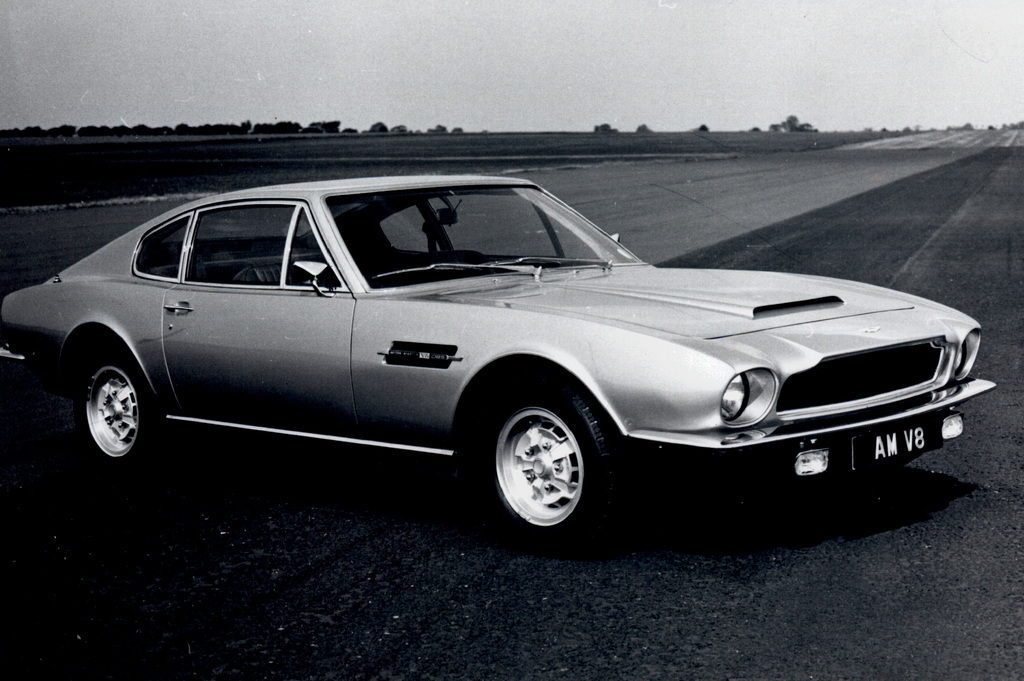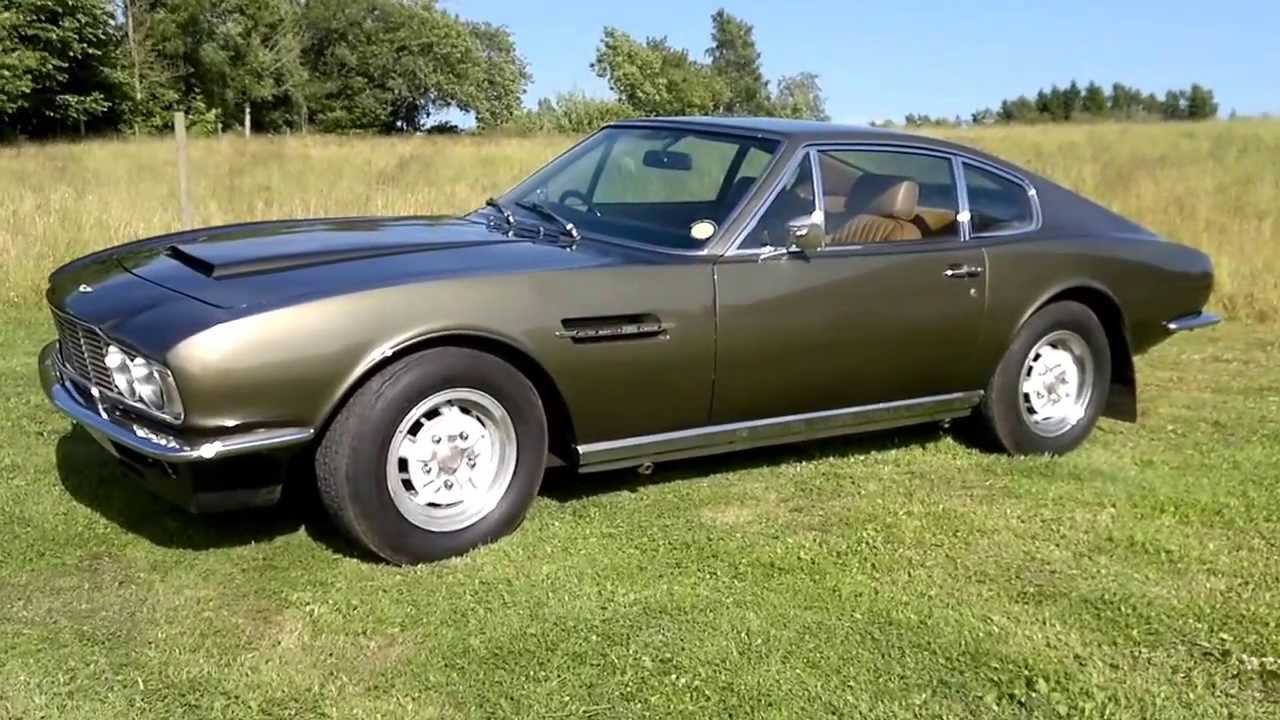1972 Aston Martin V8 Series 2
In April of 1972, Aston Martin updated DBS V8 and simply called the V8 which later unofficially became known as the V8 Series 2. Significant changes to the front of the car reverted to Aston Martins’s classic grill shape and single seven inch round headlights.
These cars used the same formula as the DBS V8, with its fuel injected V8 that fed the rear wheels though a ZF five-speed manual.
The Series 2 DBS V8 retained Bosch’s mechanical fuel injection until it replaced by a quartet of Webers in July 1973. This meant between the small production run between April 1972 and July 1973 only 288 examples of the Series 2 were produced.
More Information
The V8 was originally DBS V8 which was based on the 6-cylinder DBS of 1967. The V8 was from a design by Tadek Marek, a Polish automobile engineer, famous for his Aston Martin engines. His V8 was in use until the year 2000.
The DBS was one of the first Aston Martin’s with a chassis and no longer made with the traditional Superleggera tubular superstructure found on the DB4, DB5, and DB6. The three years, from 1969 through 1972, saw DBS V8 being used but by 1972, The DBS V8 became just the V8 as the 6-cylinder DBS was dropped, leaving just the V8 and the Vantage being produced.
Almost two tons in weight, the Aston Martin V8 was meant to be Aston’s moneymaker for the ’70s but the car was released during a worldwide recession. With its 5.3-liter engine and a top speed of 160 mph, the company was able to produce just 19 V8s in 1975 but the following years saw 2,842 V8s, Vantages and Volante convertibles produced until 1989. Perhaps, lovers of the V8 liked its aluminum body which was hand-smoothed or they just want to follow in the steps of buyers like King Hussein of Jordan, Peter Sellers, the Prince of Wales, not to mention James Bond.
Described as expensive, impractical, and a gas guzzler, the car which before was using Bosch fuel injection, switched back to carburetors for Series 3 in 1973. The car produced 310 hp and could reach 60 in 6.1 seconds with an automatic transmission or 5.7 with a manual. Due to emission regulations, power was reduced to 288 hp in 1976. In 1977, a more powerful “Stage 1” engine with new camshafts and exhaust brought the power output to 305 hp.
Specs & Performance
| submitted by | Richard Owen |
| type | Series Production Car |
| built at | England |
| price $ | $ 33,950 |
| engine | V8 |
| valvetrain | DOHC |
| displacement | 5340 cc / 325.9 in³ |
| bore | 100.08 mm / 3.94 in |
| stroke | 85.1 mm / 3.35 in |
| compression | 8.3:1 |
| power | 231.2 kw / 310 bhp @ 5600 rpm |
| specific output | 58.05 bhp per litre |
| bhp/weight | 166.49 bhp per tonne |
| body / frame | Aluminum & Steel |
| driven wheels | Front Engine / RWD |
| front tires | 225/70VR-15 |
| rear tires | 225/70VR-15 |
| front brakes | Vented Discs w/Vacuum Assist |
| front wheels | F 38.1 x 17.8 cm / 15.0 x 7.0 in |
| rear wheels | R 38.1 x 17.8 cm / 15.0 x 7.0 in |
| steering | Rack & Pinion |
| curb weight | 1862 kg / 4105 lbs |
| wheelbase | 2611 mm / 102.8 in |
| front track | 1499 mm / 59.0 in |
| rear track | 1499 mm / 59.0 in |
| length | 4648 mm / 183.0 in |
| width | 1829 mm / 72.0 in |
| height | 1328 mm / 52.3 in |
| transmission | ZF 5-Speed Manual |
| gear ratios | 2.90:1, 1.78:1, 1.22:1, 1.00:1, 0.85:1 |
| top speed | ~225.3 kph / 140.0 mph |
| 0 – 60 mph | ~7.4 seconds |
| 0 – 100 mph | ~19.6 seconds |
| 0 – 1/4 mile | ~15.7 seconds |
Auction Sales History
1989 Aston Martin V8 7.0 Litre Coupé 12635
This unique Aston Martin is accompanied by its 1989 purchase invoice, original order correspondence, MoTs back to 1992 (when first due), numerous maintenance and upgrade invoices, original owners handbook and service vouchers (correctly stamped, the most recent on 6 August, 2010 at 16,970 miles by RSW) in their green wallet and factory 1989 warranty: in short, the most extraordinary amount of documentation we have ever seen with one of these cars.
Auction Source: 2011 London Auction by RM











